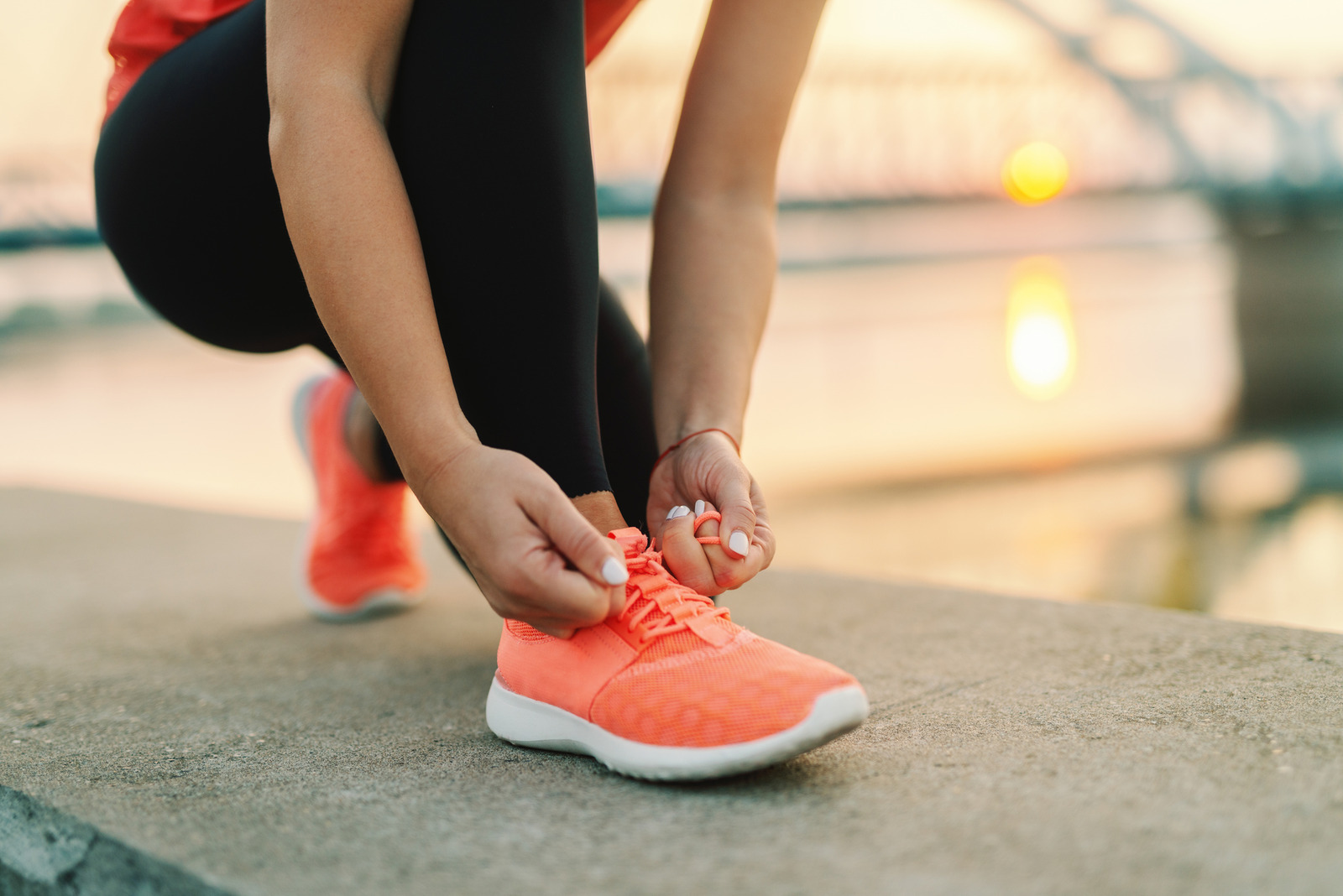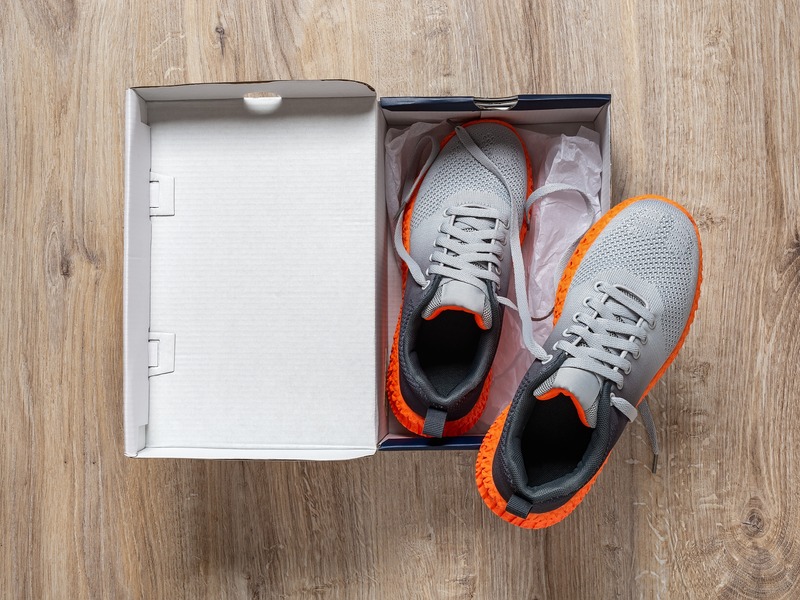Your Quick-Fire Guide to Stability Running Shoes: Finding Support for Overpronation
June 17, 2024

When you buy through links on our site, we may earn an affiliate commission.
If you've found yourself with sore lower legs or shin splints after running, you might be what's known as an overpronator – meaning your foot rolls too far inward with each impact. It's pretty common and something you're far more likely to do if you have flat feet.
However, there's help at hand in the form of stability running shoes. They are a category of shoe that offers specific features to gently guide your foot into more natural motion, reducing stress on your knees and lower joints.
This quick-fire guide will cover everything you need to know about these shoes, including the key differences between stability levels, and give you some shoe recommendations based on your needs.
Understanding Overpronation: What It Is and Why It Matters
Have you ever noticed your shoes wear unevenly or felt pain creeping up your lower legs and into your knees after logging miles? The culprit could be overpronation. That term might be new for you, so let's break it down so you know exactly what's going on.
What is Overpronation?
When you run, overpronation occurs when weight transfer causes the arch of your foot to collapse inward with each stride. Essentially, your foot rolls too far inward when pushing off. This inward rolling motion is called overpronation, and too much can negatively impact your gait cycle.
Causes of Overpronation
A few key causes of overpronation include flat feet, flexible arches that compress too much, and weak foot muscles that are unable to stabilize properly. Genetics plays a big role as well. Some people are simply more prone to overpronation due to bone structure and alignment.
Potential Problems
Too much overpronation while running leads to uneven impact forces traveling through your legs. This can ultimately result in unpleasant and even painful issues like plantar fasciitis, shin splints, runner's knee, IT band syndrome, and more.
The good news is that stability running shoes are specifically designed to prevent excess inward rolling. They're packed with features, some of which are unnoticeable to the untrained eye, that help to steer your foot into a healthier foot strike pattern.
How Stability Running Shoes Can Help
Now that you understand overpronation, let's explore how stability shoes can help counteract those excessive inward rolling forces.
These specialized running shoes feature strategically designed components to support and gently guide your foot's motion with each stride. In essence, they aim to optimize your biomechanics for injury-free running.
The Science Behind Stability Shoes
Through extensive gait analysis research, running shoe companies determine how to incorporate features that work with your foot – not against it. The key goal is limiting excess pronation and evening out the impact your legs, knees, and hips absorb.
Key Components of Stability Shoes
Below is a list of some of the most common features of stability shoes and how they counteract your natural tendency to roll inwards.
- Medial posts: This denser foam wedge along the instep (inside edge) of the shoe cushions and resists inward rolling.
- Dual-density midsoles: Using different cushioning densities, targeted softness or firmness provides stability precisely when and where you need it. Brands like Brooks use a “guide rail” system – using a firmer instep and softer outer heel zone to better guide footstrikes.
- Arch supports: These better reinforce arches, improving foothold and preventing uncomfortable flattening, which strains your entire body.
- Heel counters: You'll notice stability shoes wrap snugly around your heel. This external plastic or firm foam structure lends rearfoot stability upon footstrike impact.
Benefits of Wearing Stability Shoes
As you might have guessed, the benefits of wearing stability shoes as an overpronator primarily center around more comfortable running. With tailored support, you can benefit from more economical running form and, crucially, stay injury-free.
Many studies have backed this up, with one in the British Journal of Sports Medicine proving that wearing stability shoes reduced injury risk to overpronators.
Choosing the Right Level of Stability Running Shoe
Before you rush off to buy your next pair of stability running shoes, you need to appreciate that there are different levels of support and stability available.
Mild stability shoes will be the best fit for you if you're looking for a touch of extra reinforcement due to your subtle inward-rolling tendencies. But if you're looking for solutions to more aggressive overpronation, it's probably wise to consider motion-control shoes. These shoes usually feature everything listed above, including medial posts, rigid heels, guide rails (or similar variants), and much more.
However, it's important to note that running shoes have been changing, and very few genuine motion-control shoes are left on the market. The advancement of foam technologies and other running shoe features have given runners shoes that tackle overpronation without the rigidity of the past.
That means you need to evaluate other features (in addition to your stability needs) when choosing the right pair of running shoes. For instance, cushioning, desired use cases (fast running vs. daily miles), and heel-to-toe drop will all be relevant considerations, as they would be if you were choosing a neutral running shoe.
Top Stability Shoe Recommendations
With so many stability shoes from top brands, narrowing down the best choice for your needs can feel overwhelming. Let's make it a little easier for you by providing some suggestions based on your needs.
For an overall winner that delicately balances stability, cushioning, and versatility, look no further than the Brooks Adrenaline GTS. This popular shoe, with its famed guide rails, provides excellent stability for moderate to aggressive overpronators. Now in its 23rd iteration, it regularly comes out on top in user tests and polls and has become synonymous with the stability shoe category.
The Saucony Omni might be an excellent bet if you're new to stability shoes. It focuses on comfort with a plush feel to gently transition your running form. The Omni works well for logging those daily miles with a tall stack height (35mm), delivering tons of cushioning.
Training for an upcoming marathon? You might want to try the Asics GT-2000. Like the Brooks, this running shoe has become a staple for many who need extra stability. It's known for durable cushioning and is therefore well-suited to longer-distance training (hence its popularity with distance runners prone to knee or hip pain).
Prefer speed sessions or tempo runs? The New Balance Prism checks every box. This lightweight stability shoe offers an excellent blend of stability and responsiveness for faster-paced training days.
Lastly, if you're a trail runner looking to combine extra support and grip with stability, look at the Brooks Cascadia. It boasts many of the industry-leading Brooks stability features while delivering aggressive traction lugs and a protective upper.
Find Your Perfect Stability Shoe at a Discount Today
As we've explored, overpronation can lead to discomfort, impaired efficiency, and increased injury risk. Thankfully, selecting the appropriate stability running shoes will provide the extra reinforcement you need to optimize your biomechanics and run mile after mile pain-free.
Once you've undertaken a gait analysis (either by yourself or at a local running store) to understand how much you overpronate, you can find the most appropriate shoes for your stability requirements and running style.
Then, with your preferred models in mind, simply type them into our interactive search bar here on RunningShoeDeals.com to find discounts and the best possible prices on running shoes from leading retailers.
With the proper footwear keeping you aligned stride after stride, you'll be able to log injury-free miles confidently in complete comfort.


